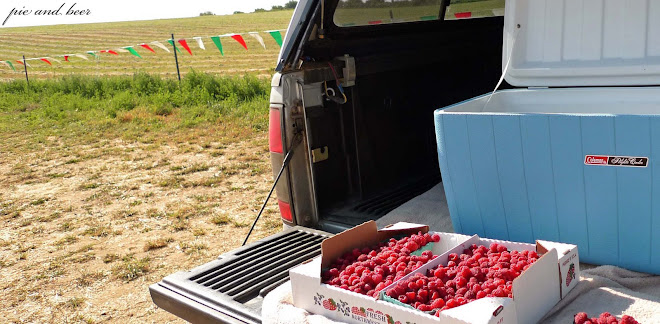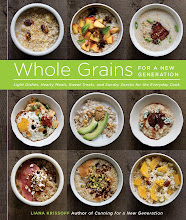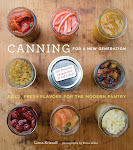After the bug was in bed one evening recently I went up the road to the blackberry bramble and got as many as I could before I realized it wasn't worth the effort. It was too hot, even at dusk, too thorny, and I got too many fire ant bites to justify another round of picking. I didn't get that many, but made a sort of tart with them anyway, like I did
a year ago. I think this year the berries were more bitter ("toxic," Mr. Chalmers called them, not inaccurately), but I like blackberries so much it didn't matter to me.

A few days later, I picked several handfuls of plump, very sweet wild blackberries that were growing next to the front porch, and the bug and I sat right down in the yard and ate them all, two or three at a time.
 Here she is, postblackberries. I didn't look much less messy myself.
Here she is, postblackberries. I didn't look much less messy myself.Mr. Chalmers's newly retired mom came down from New York to visit for a week, and we somehow managed to convince her to move to Athens! We took her to see houses, we kept the a/c cranked up, we kept her away from people with thick Southern accents, we gave her wine with dinner . . . But of course the real hero is the bug. This is big, since we don't have any other family nearby. Fun for the kid, fun for us, fun for her.
Grandma's last full day here was spent in the ER with the bug, who had gotten her finger crushed in the hinge side of the front door. I'd set her down on the porch while I closed the door and pushed the dogs back inside, and didn't even notice she was sticking her hand in the door until it was too late. She lost her whole fingernail, and she may or may not grow another one. (In the latter case, says Mr. Chalmers, she'll just have to stay in rural Georgia.) She was unbelieveably brave through it all, even though she was in terrible pain for a good long while. I read her stories as her grandma drove us to the hospital, and the little sweetie was trying so hard to pay attention to the story and ignore how much her finger hurt. She was also very patient as they took X-ray after X-ray, taping her hand down each time. (By the fourth or fifth one, though, she'd had about enough.) And she did really well with the hours of waiting in small rooms full of things that aren't toys. We can't keep a bandage on her finger, so we're just trying to keep it clean and Neosporined.
For the Fourth of July, Mr. Chalmers smoked brisket, chicken legs and thighs, and tofu, and I made a couple vegetables and a very good
blueberry pudding cake. I tried to make a sweet potato pone from the
Ebony cookbook, but something went horribly wrong. Anybody know of a better pone recipe? It should be like a sweet potato pudding, right, like in
The Yearling?
We also blew up a huge "kiddie" pool and stuck it in the front yard and filled it up with ice-cold water. The bug was fascinated by it until we plunked her in it and she realized the water was ice-cold. A little while ago, though, I dragged a lawn chair up to the edge of the pool, and rolled her (new!) stroller next to the chair, and we both sat and splashed our feet in the water and she liked it. I did too.
 I also made a tindora dish that I think worked pretty well. You could probably use sliced okra or zucchini or yellow squash instead of tindora. Did not take a picture, but the tindora was very pretty and colorful—green skin, turmeric-yellow coconut flakes, and flecks of red pepper.
I also made a tindora dish that I think worked pretty well. You could probably use sliced okra or zucchini or yellow squash instead of tindora. Did not take a picture, but the tindora was very pretty and colorful—green skin, turmeric-yellow coconut flakes, and flecks of red pepper.


















